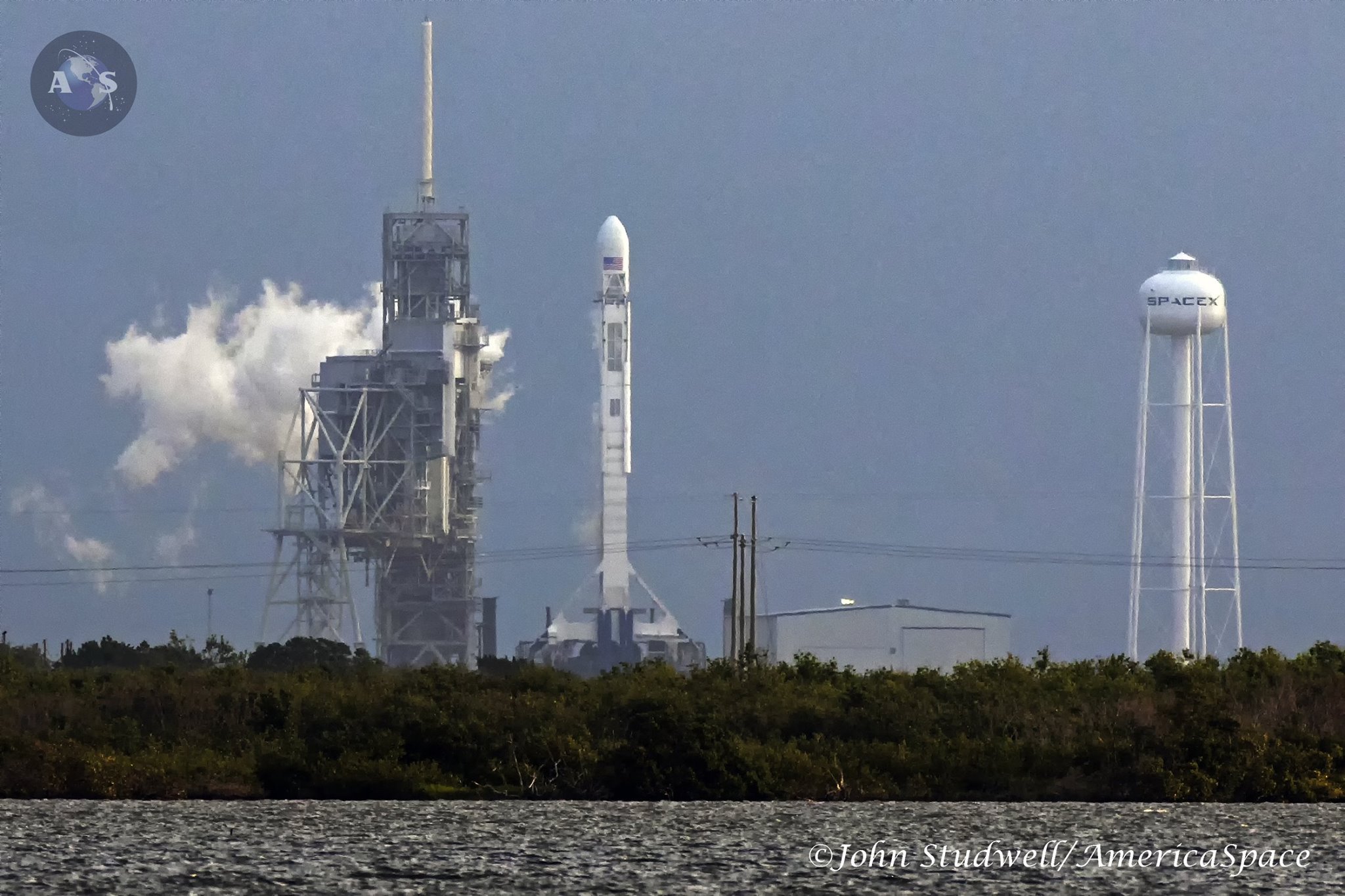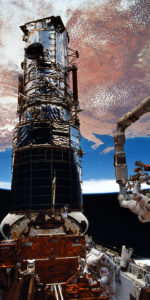
On May 1 at 7:15 a.m EDT, SpaceX and the National Reconnaissance Office (NRO) launched the NROL 76 spacecraft on a 58 deg. trajectory up the U.S. east coast, flying atop a Falcon 9’s nearly 1.7 million pounds of thrust from Kennedy Space Center’s Launch Complex 39A in Florida.
Launch had been delayed by a defective Falcon sensor.

A spectacular landing of the first stage occurred at nearby Cape Canaveral Air Force Station, about 8 miles south of KSC, only 8 min. 46 sec. after liftoff, as the 210,000 lb. thrust second stage propelled the classified satellite aloft.
It was the fourth successful landing of a Falcon 9 back on dry land and tenth recovery of a used booster.
The secret NROL 76 mission has characteristics like the NROL 21/ USA193 imaging radar spacecraft ordered shot down by President Obama 2006.
President Obama ordered the destroyer Lake Erie sailing west of Hawaii to use a Standard SM-3 missile to destroy the failed radar satellite.
The unprecedented Presidential action became necessary when engineers determined that, when the old spacecraft went out of control, its several-hundred pound load of hydrazine propellent had frozen into a large ball that could have survived reentry onto a populated area where it could have caused impact damage and worse; the spread of a dangerous life threatening hydrazine gas.
Canadian analyst Ted Molczan estimated the new spacecraft’s initial orbit was 353 km. x 366 km. (219 mi. 227 mi.) inclined 58.5 deg. and with a payload weight of 10,927 kg. (24,089 lb.)
Elon Musk, who heads SpaceX, said the flight was a “tough call”, given that the high altitude wind shear affecting both launch and landing was measured at 98.6 percent of the vehicle’s theoretical load limit.
But data and imagery showed both ends of the flight went perfectly, and that NRO 76 satellite is fine, as is the its nose shroud, that was also recovered by parachute for reuse.
Tracking camera imagery from KSC and on the first stage booster showed spectacular imagery of separation of the first and second stage, then stage one pitch backward to fire thrust from the engines in the boost back burn. Seconds later, The three again fired for the reentry and finally 3 more for the landing and touchdown. But, given the clear day at the Cape, it was a magnificent show of rocketry.
As AmericaSpace reported earlier, the Falcon 9 was first flown in June 2010 and since then it has wrapped up 33 successful flights (including NROL 76).
Falcon 9’s have delivered at least 27 major payloads to low-Earth orbit—including 10 Dragon cargo ships bound for the International Space Station (ISS)—together with 12 communications satellites to geosynchronous orbit and a handful of scientific spacecraft to other locations, including near-polar orbit.

The Falcon 9 suffered a major failure during flight on 28 June 2015, destroying its Dragon payload, and then endured another serious accident on 1 September 2016, when it catastrophically exploded on the launch pad.
SpaceX was cleared by the Air Force to fly secret military missions in 2015.
Key events in the Falcon 9’s countdown and launch were:

T-1 hr. 13 min: Launch readiness poll of the launch team.
T-1hr. 10 min: Loading of RP-1 fuel underway.
T-45 min: Loading of liquid oxygen underway.
T-7 Min: Falcon 9 begins engine chill down.
T-2 Min: Air Force Range gives all clear for 1st stage return.
T- 1 Min.30 sec: SpaceX calls “Go For Launch”.
T- 60 seconds: Flight computer commanded into final checks.
T-60 seconds: Propellant tanks pressurizing to flight pressure.
T-03 seconds: Engine controller commands “ignition sequence to start”
T-ZERO: LIFTOFF OF FALCON 9 ON MORE THAN 1.7 MILLION LB. THRUST.
T-plus 1 min. 8 sec: Max Q maximum aerodynamic pressure.
T-plus 2 min. 17 sec: First stage shutdown and separation of second stage.
T-plus 2 min. 28 sec: Ignition of 210,000 lb. thrust second stage engine to put NRO 76 satellite in orbit.
T-plus 2 min, 48 sec: fairing separation as first stage executes turnaround to propel itself south back to launch site.
T-plus 7 Min. 9 sec: First stage reentry burn to descend to Cape Canaveral landing site.
T-plus 8 min. 46 sec: first stage landing.
.
.
Be sure to “LIKE” AmericaSpace on Facebook and follow us on Instagram & Twitter!
.
Missions » NROL » NROL-76 » Missions » NROL »
















These are some of the best images I’ve ever seen of a returning booster.
Like science fiction–just minus the fins